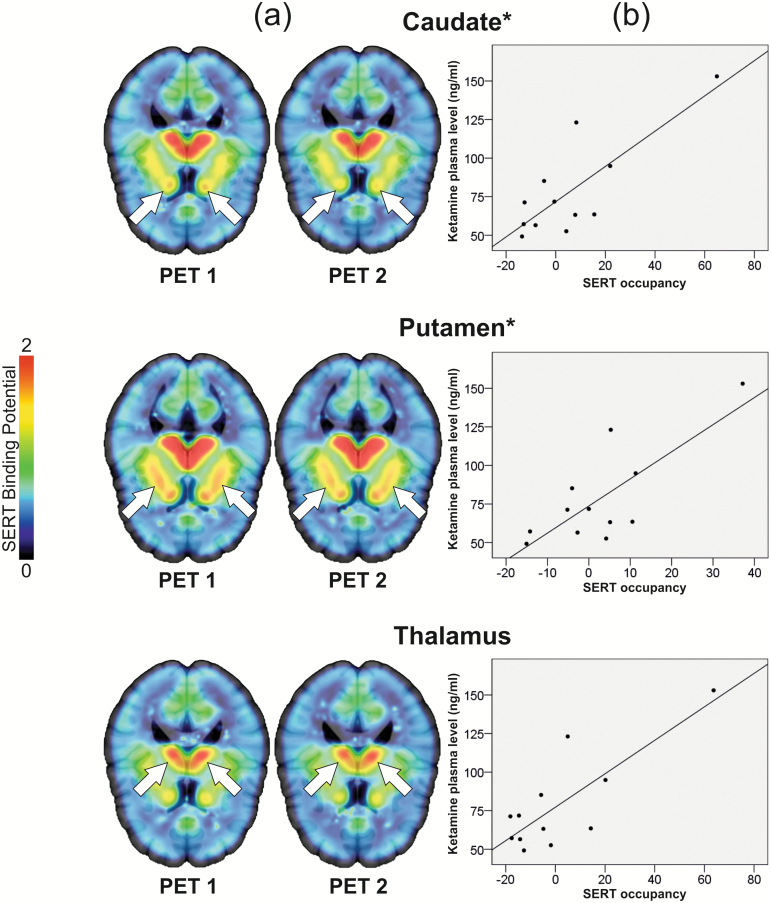Figure 1.
(a) No measurable occupancy of the serotonin transporter (SERT) after 0.50 mg/kg bodyweight ketamine. [11C]DASB nondisplaceable binding potential (BPND) decreased numerically from positron emission tomography (PET) 1 (left, before ketamine application) to PET 2 (right, after application of the standard antidepressant dose of 0.50 mg/kg bodyweight ketamine) in the caudate, putamen, and thalamus. Mean occupancy values ± SD of the SERT were 5.86±21.88, 2.70±13.76, and 1.11±23.27, respectively. Results were interpreted as a lack of measurable binding, because occupancy values are within [11C]DASB test-retest variability (Kranz et al., 2015) (see supplement). Color bar represents [11C]DASB BPND. Slices at z=10 (caudate), z=6 (putamen), and z=12 (thalamus). For [11C]DASB BPND and occupancy values see Table 1. (b) Correlation between ketamine plasma levels and SERT occupancy. Ketamine plasma levels assessed after ketamine administration during PET correlated with SERT occupancy within the caudate and putamen (caudate 20 min: P=.042; 30 min: P=.018; putamen 30 min: P=.031, all uncorr., min indicate time after start of PET measurement). Though the correlations are influenced by outliers, these findings might suggest that ketamine may bind the SERT when levels are higher, for example, when ketamine is administered at higher doses or depending on differences in metabolism (Zarate et al., 2012; Zhao et al., 2012). Correlation analyses with ketamine plasma levels drawn 30 minutes after PET start are depicted. Correlations may be significant at this time point, as ketamine kinetics are known to switch from the distribution to elimination phase around this time (Hijazi et al., 2003). *Indicates statistical significance of correlations (P<.05, uncorrected). For occupancy values and ketamine plasma levels, see Tables 1 and 2.

